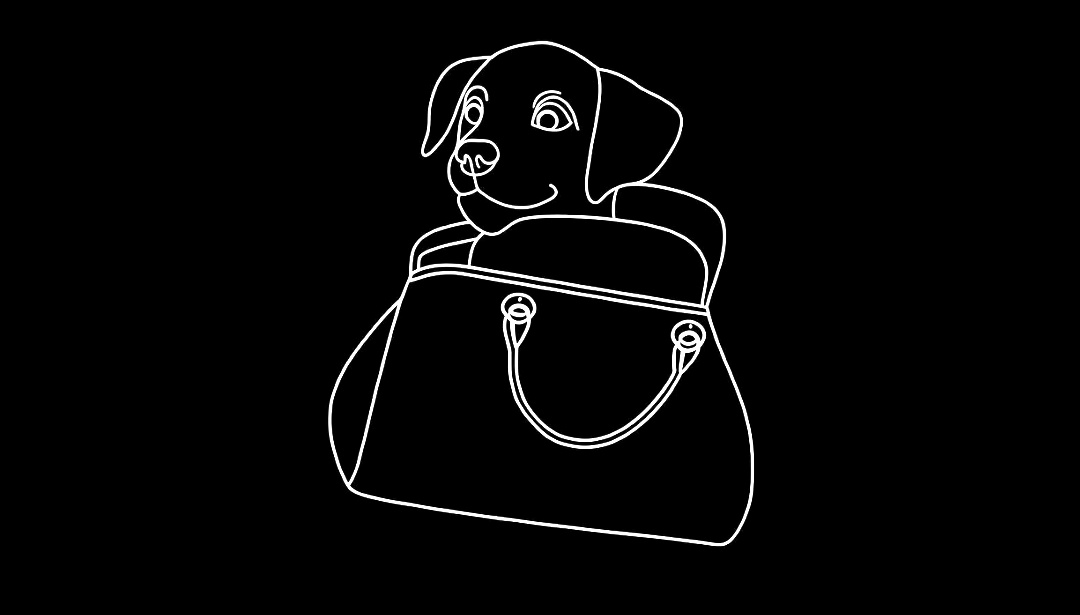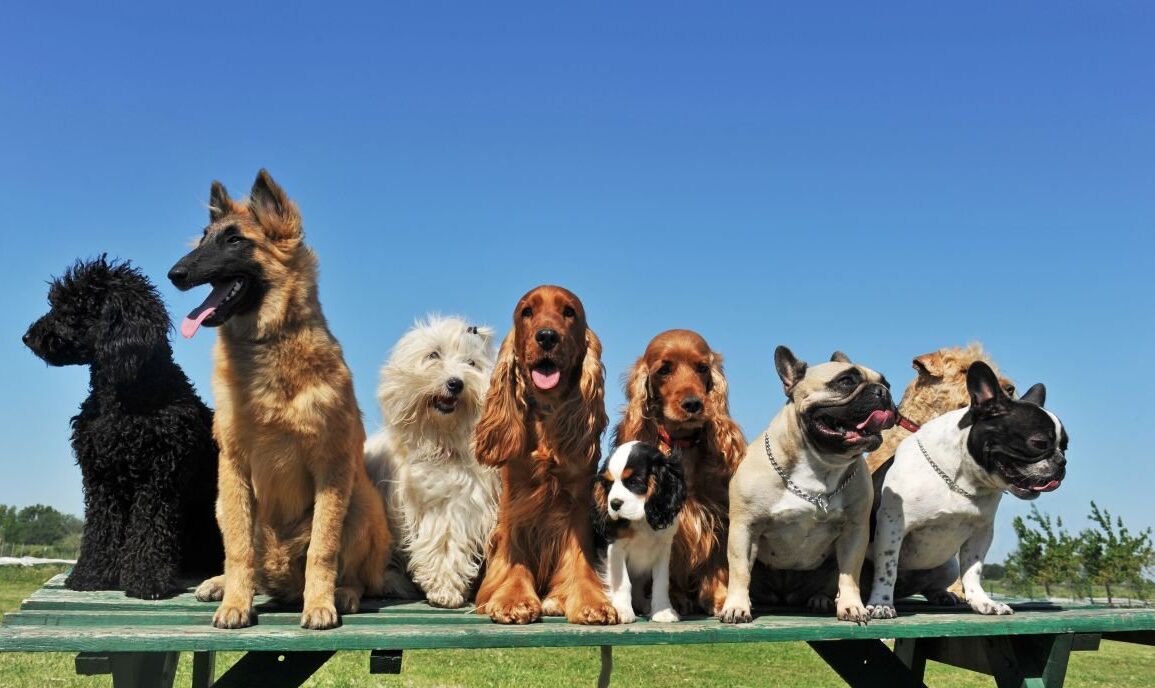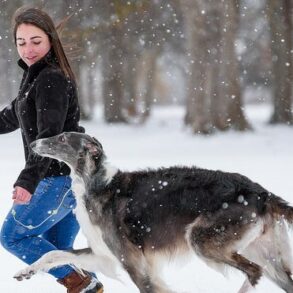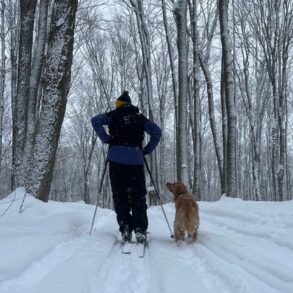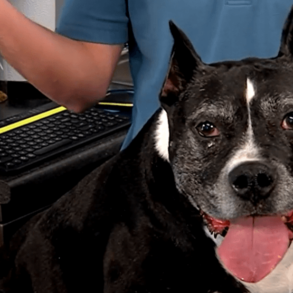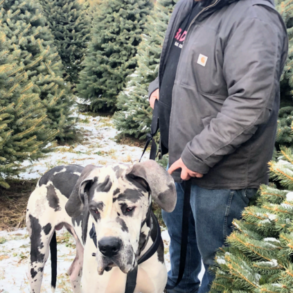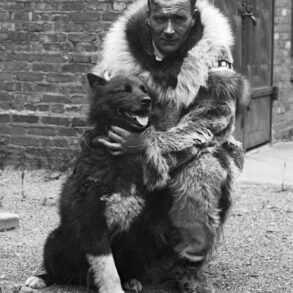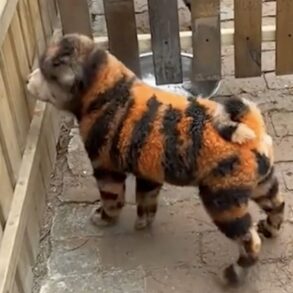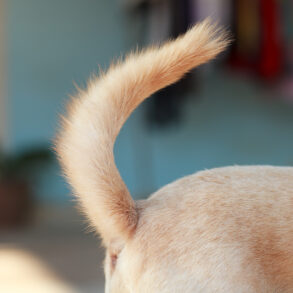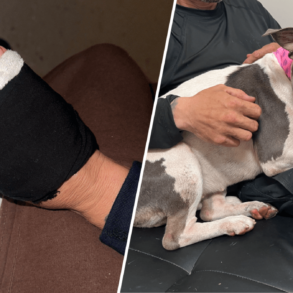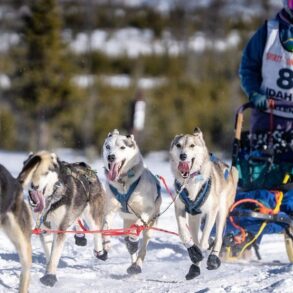For centuries, humans have selectively bred dogs for specific tasks such as herding, guarding and hunting.
While many assume these breeds are uniquely suited to their roles due to structural adaptations, a new study has challenged this long-held belief.
The research, published in the journal Science Advances, analyzed 117 skulls from 40 domestic dog breeds and 18 wild canid species using 3D reconstruction techniques.
The results revealed that the shape of dogs’ skulls across different breeds shows a remarkable level of overlap, indicating that certain breeds, at least in terms of biting and smelling, may not have distinctive physical traits that enhance their abilities after all.
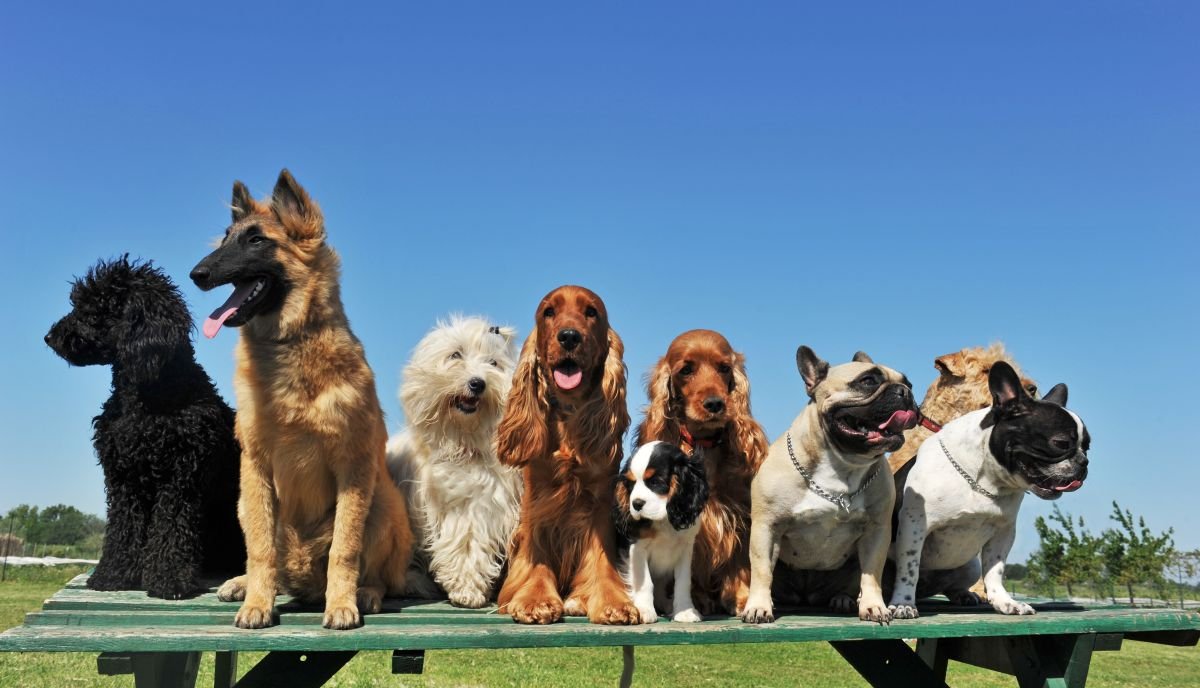
Nine dogs of different breeds sit on a bench in a park under a clear blue sky.
cynoclub/Getty
“In the past 200 years, humans have created hundreds of dog breeds that look really different and are pretty specialized at some tasks like herding, protecting and detecting odors,” Lindsay Waldrop, who co-led the study, said in a statement.
“We have assumed that these dogs look different because they are structurally specialized at these tasks, but our study shows that, at least for their skulls, they are not specialized for tasks that involve the skull, such as biting tasks and scent work.”
Newsweek contacted the study’s authors via email for further comment.
The study’s findings also have significant implications for breed stereotypes. For example, breeds often associated with strong bites, such as pit bulls, are often labeled as dangerous due to their physical traits.
However, the research found no structural differences in their skulls that would make them inherently more dangerous than other breeds of similar size.
“There are many news stories about dogs attacking people badly and often there are specific breeds that are targets of this reporting,” Waldrop said. Some people claim that these dogs will bite harder than other dogs of the same size, or they have special features like ‘locking jaws’ that make them especially dangerous to people.
“Our study shows that this is simply not true; dogs bred to bite things aren’t structurally different than dogs that have been bred to do other things.”
Similarly, breeds historically bred for scent work did not show distinct olfactory adaptations in their skull morphology compared to other breeds. These findings are in lockstep with previous research showing, for example, that pugs outperform German shepherds at scent work, despite common assumptions to the contrary.
If skull shape does not determine a dog’s ability to perform specialized tasks, what does? According to the researchers, factors such as individual personality play a much larger role in a dog’s suitability for certain jobs than physical morphology.
“I was most surprised by the overall similarity we see in most of the dog skulls,” Nicholas Hebron, another co-lead of the study, said in the statement.
“Humans have done so much breeding work to alter the visual appearance of these animals that I honestly expected to see really marked groupings of some kind and we really didn’t see much of that.”
A Contrast with Wild Canids
The study also examined how domestic dog skulls compare to those of wild canids, such as wolves and foxes.
Unlike domestic dogs, wild species exhibited skull shapes that closely aligned with their natural functional needs.
Wolves, for example, have elongated snouts optimized for both hunting and scent detection.
Interestingly, fox skulls overlapped significantly with certain domestic breeds, such as terriers, which were bred for small prey pursuit.
Do you have a tip on a science story that Newsweek should be covering? Do you have a question about dog breeds? Let us know via science@newsweek.com.
References
Hall, N. J., Glenn, K., Smith, D. W., & Wynne, C. D. L. (2015). Performance of Pugs, German Shepherds, and Greyhounds (Canis lupus familiaris) on an odor-discrimination task. Journal of Comparative Psychology, 129(3), 237–246. https://doi.org/10.1037/a0039271
Hebdon, N., Ortega, A., Orlove, A., Wheeler, N., Pham, M., Nguyen, V., Gladman, J., & Waldrop, L. D. (2025). Dog skull shape challenges assumptions of performance specialization from selective breeding. Science Advances, 11(5), eadq9590. https://doi.org/10.1126/sciadv.adq9590
This post was originally published on this site be sure to check out more of their content.
